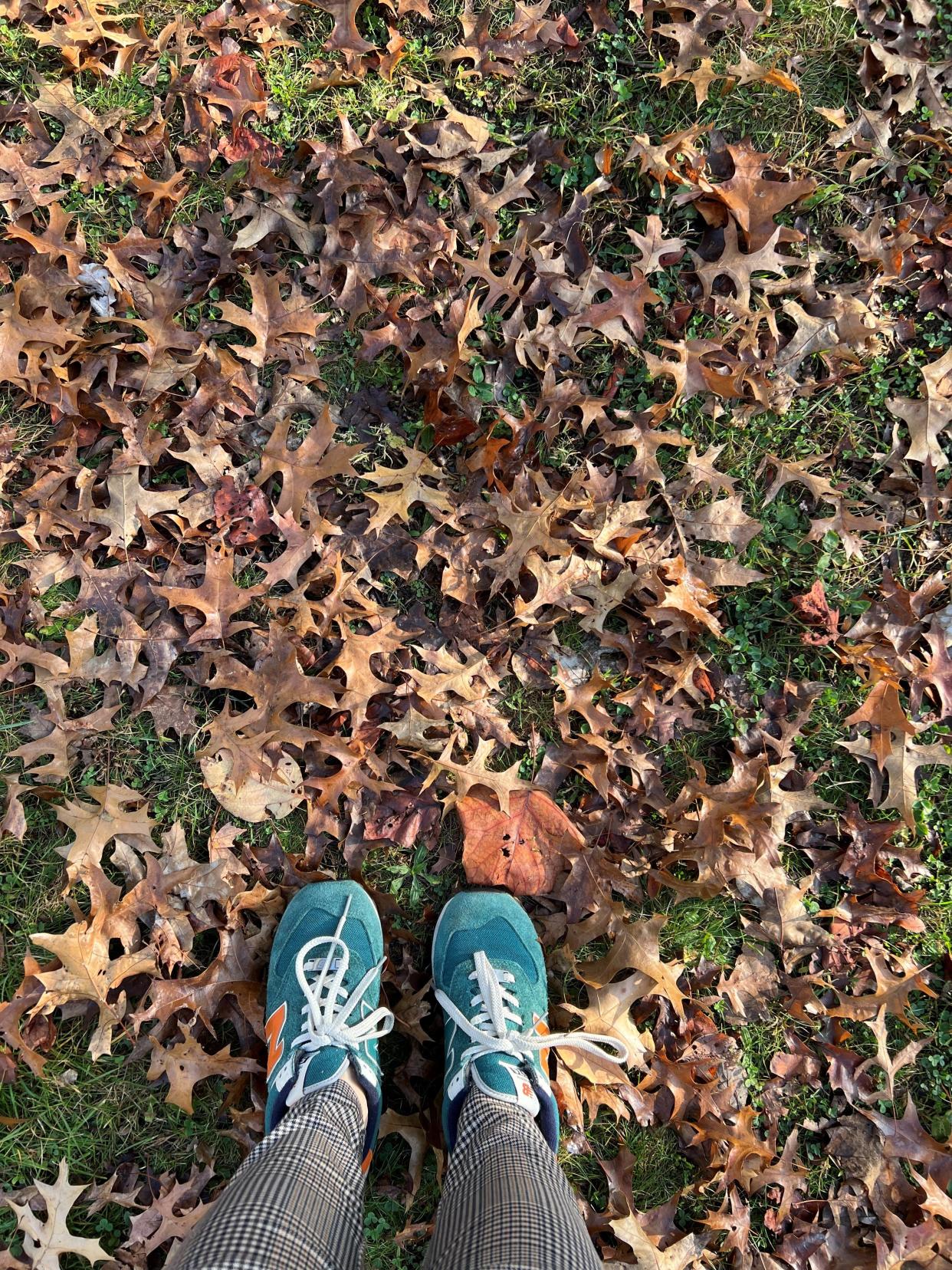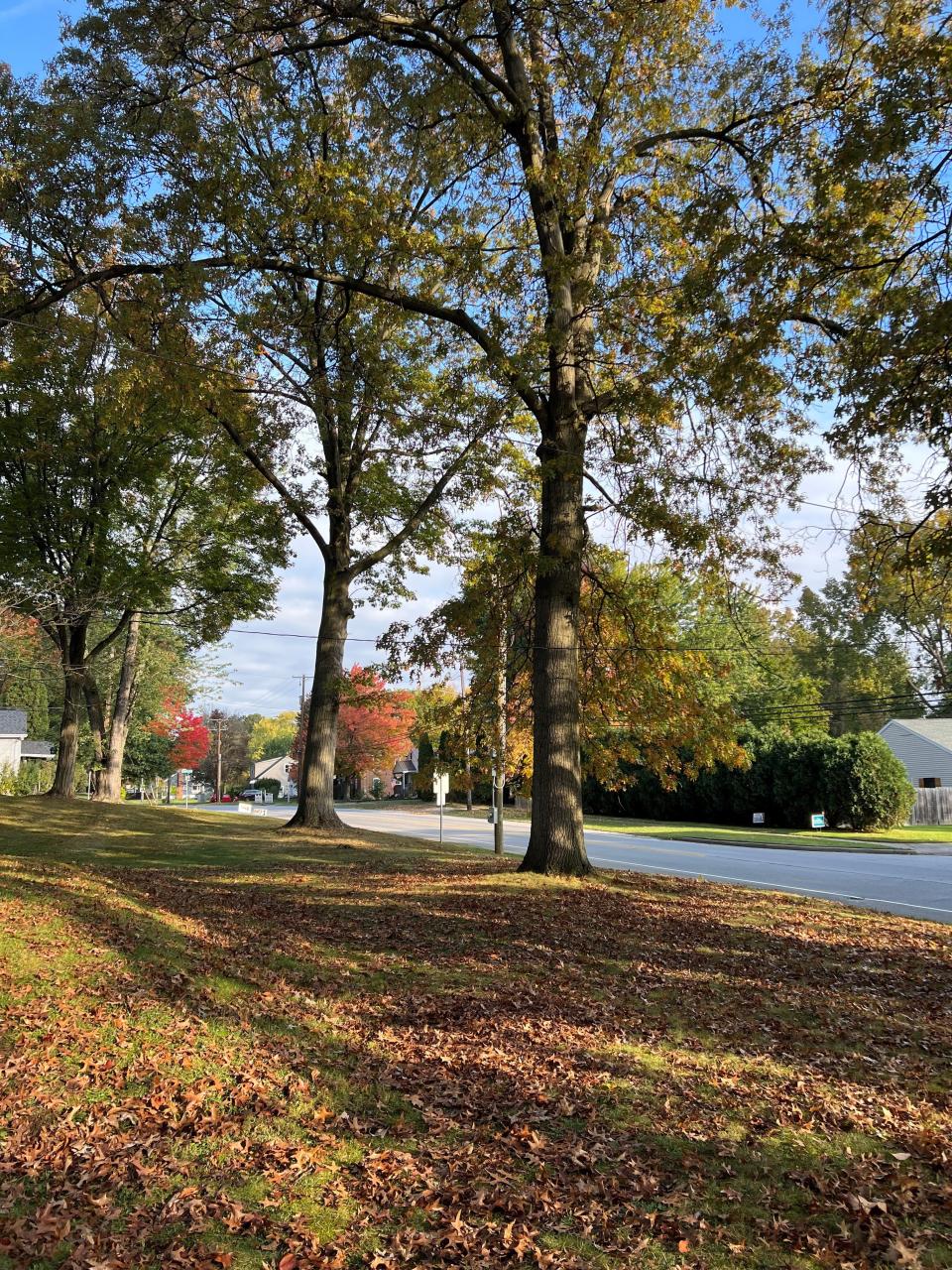The magic of fall doesn’t stop when the leaves come down | Home With Tess

Fall might single-handedly be the best thing about living in Ohio.
It’s my favorite season, and I believe we live in a place that rivals the best fall scenery in the whole darn country. (Martha Stewart apparently thinks so, too — or at least her web writers do.)
I’m enjoying the season, I really am — but I’m also bracing myself for when fall starts to remind us how it got its name.

Suddenly, those crunchy, colorful clusters of leaves fall to the ground and become a cluster … well, let’s just say a mess. A huge, heaping mess.
My house is near the national park, and the large oak, elm and tulip trees in our yard are a constant reminder of that. Every year, our modest yard gets bombarded with leaves that carpet the ground during stormy intervals throughout the season.
More: We ran the roads in Summit County to see which has the best fall foliage: Here's what we found
I have to chuckle when I see the USDA urge “leave the leaves!”
If we were to truly leave the leaves where they lie (say that 10 times fast), I fear we’d be at risk of creating some kind of out-of-control outdoor terrarium. We spent a whole season cleaning up what we thought was a sorely neglected yard, but after living in our house for five years, I’ve realized that it likely didn’t take long to get to that point.
We’ve tried to mulch the leaves in layers as they fell, but once you get off track and a layer gets too thick, there’s no going back — you either have to move the leaves or let nature take its course.
But leaves really do bring so many benefits, both to the environment and your soil. They act as a natural, free mulch that both suppresses weeds and fertilizes the soil. They break down quickly while also providing a habitat for little critters who overwinter in them, like birds and frogs.
So, we try to use them where we can without letting our yard get past the point of no return (AKA a leaf-based swamp).

I’ve used them to start a compost pile in my backyard that wound up becoming more like a dumping ground for weeds and the occasional food scrap. Still, it has broken down, and I was able to use it this year to add to my vegetable garden (which I believe would have thrived if not for the squirrels, but still did quite well in spite of them).
I’ve also used it to fill in areas around our patio where we’re creating flower beds, and it was the first time I actually felt the financial benefits of composting. If I didn’t have that quality soil in my backyard, I easily would’ve spent $100 on it at a store.
More: Mother Nature knows best even if we don’t know it | Home With Tess
Leaves don’t need to be broken down to enjoy their benefits, either — not even a little bit. I’ve quite literally created big piles of leaves where I wanted garden beds to be, and by the spring, they’re well on their way to breaking down into nutrient-filled soil. It’s kind of like magic, if you think about it.
Still, inevitably after adding leaves to my garden beds and filling in empty spots in the yard with them, I’ll still be drowning in them. Luckily, the city I live in provides curbside leaf pickup, which is just about as easy as it gets, and yet is still a multiday endeavor.
But knowing I can use at least some of those leaves to help both my soil and the environment makes the cleanup a small price to pay.
In the meantime, if anyone needs leaves for some reason, you know how to find me.
Home With Tess: Small household habits add up in big ways
Home With Tess: Balancing beauty and function with a baby in tow
This article originally appeared on Akron Beacon Journal: Turn leaves into fertilizer with little effort | Home With Tess

